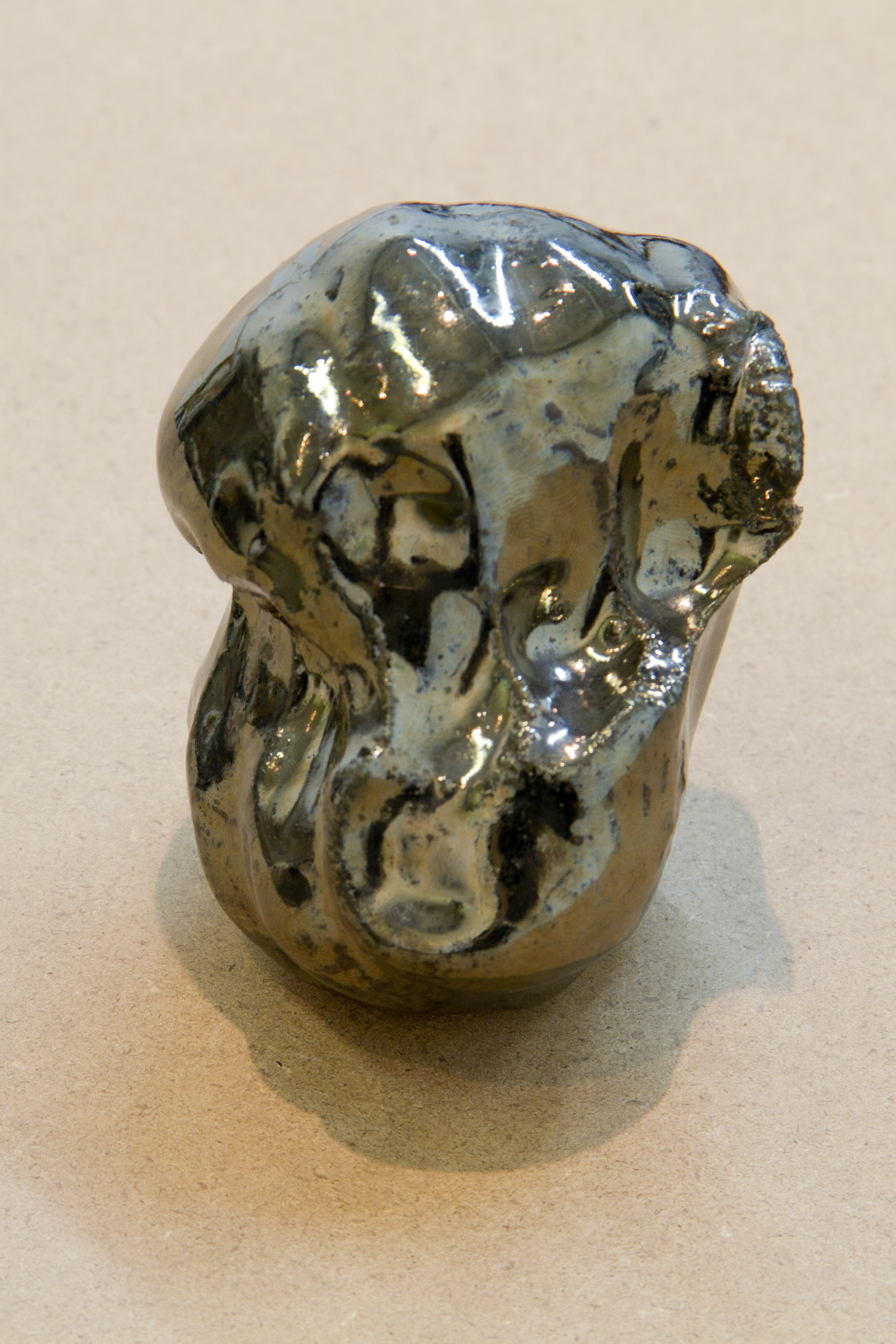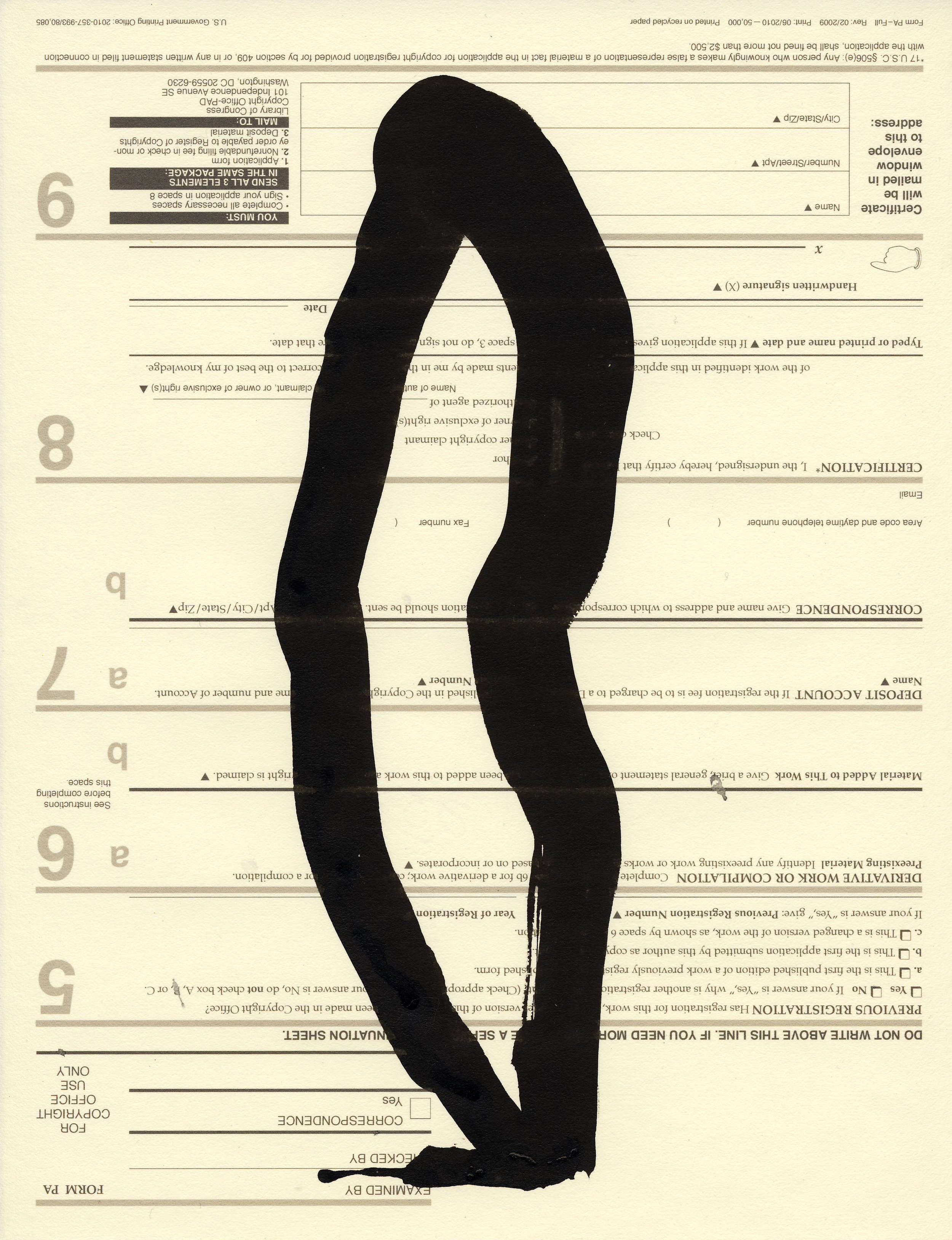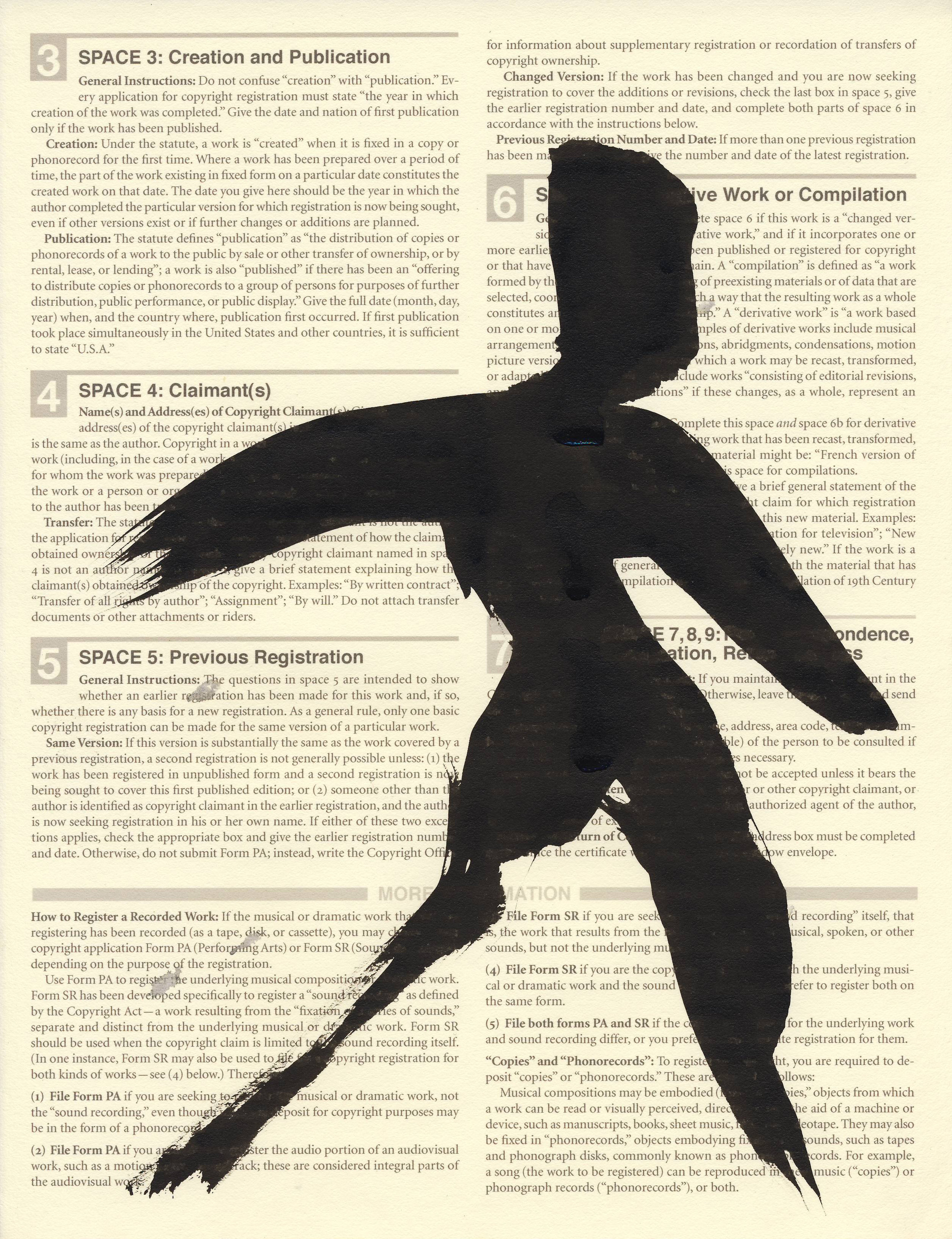







































Groundstroke
2013. ceramics, two-channel video, Sumi ink drawings, floor drawing, copyright patent document
This new series of ceramic sculptures, drawings, videos, a copyright patent document, and a floor drawing explore how human movement and body language negotiate their limits in the everyday restraining systems of technology, intellectual property law, and sport.
The artworks and the viewers of the exhibition are imagined as figures, or players, situated upon a destabilized ground – a gestural drawing made by superimposing the linear composition of a tennis court onto the gallery floor. The works in Groundstroke situated within this space continue the explorations of Lerman's Release series, in which she created drawings and sculptures by literally re-inscribing the patented and copyrighted system of touchscreen gestures onto ceramic templates suggesting smartphones and tablets. Throughout the gallery viewers encounter ceramic game board sculptures upon which she has used her fingers to gouge out gestural marks in the slabs of clay, pinching off the clay displaced by the negative space of the marks to create minuscule figures. These tiny formless bodies traverse a new imaginary hybrid landscape between athletic fields and the gallery architecture of Malraux's Place, allegorizing the viewers of Groundstroke in the process.
A grouping of Sumi ink drawings similarly compress the gallery's blueprint and the formal compositions of basketball, tennis, soccer, and football fields to evoke an indexical, calligraphic, abstract space. In a two-channel video Lerman performs a series of methodical gestures dictated by two systems: on one screen the twenty-six copyrighted poses of Bikram Yoga, and on the second screen the patented system of touchscreen gestures. Framing just the torso rigidly confined in tightly cropped close-ups, the regimented yet often erratic movements depicted on the two screens play off of and echo each other in a delirious, repetitive dance of re-inscription, at times becoming nearly identical as they twitch and contort to carry out the prescribed, legally bound bodily gestures. Lerman then proceeds to turn this dueling hybridized dance of restraint against itself by re-inscribing her perverse series of movements in a legally binding contract of copyright law, simultaneously liberating and re-imprisoning her body. In so doing, her newly patented dance simultaneously expressively recalls, and masochistically détourns the daily struggle presented to the human body by the abstract forces of technology, intellectual property law, and athletic competition respectively.